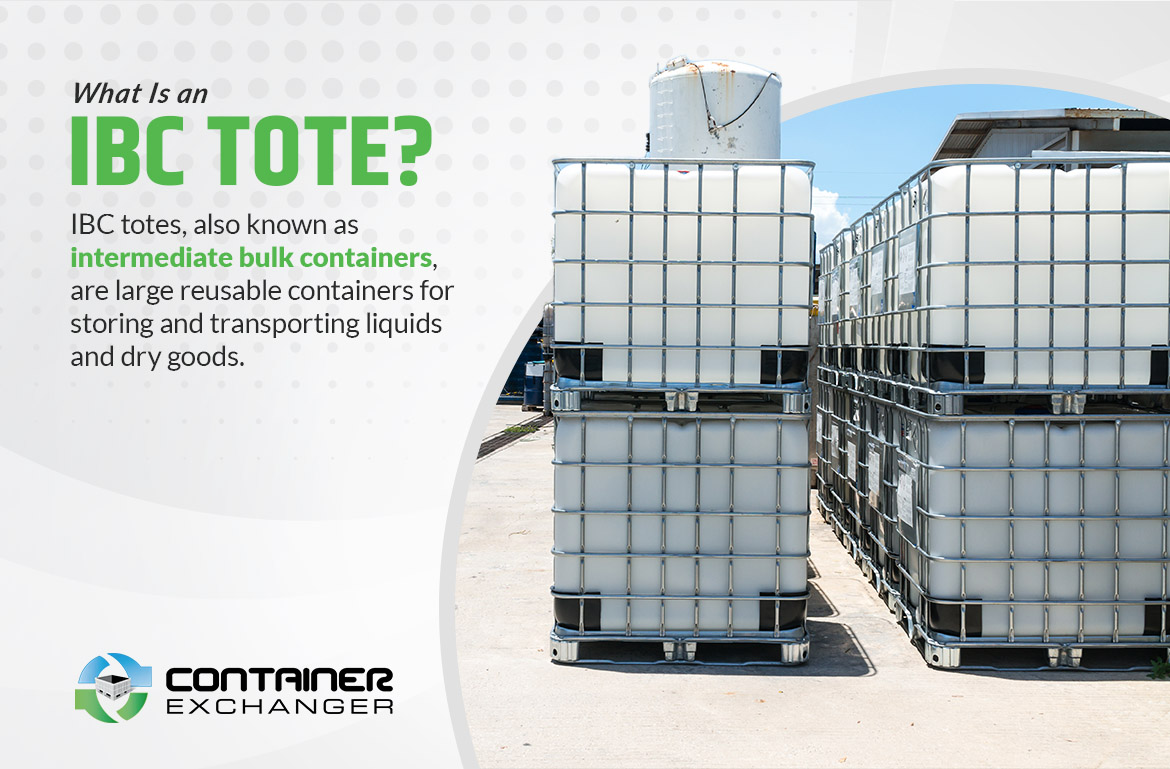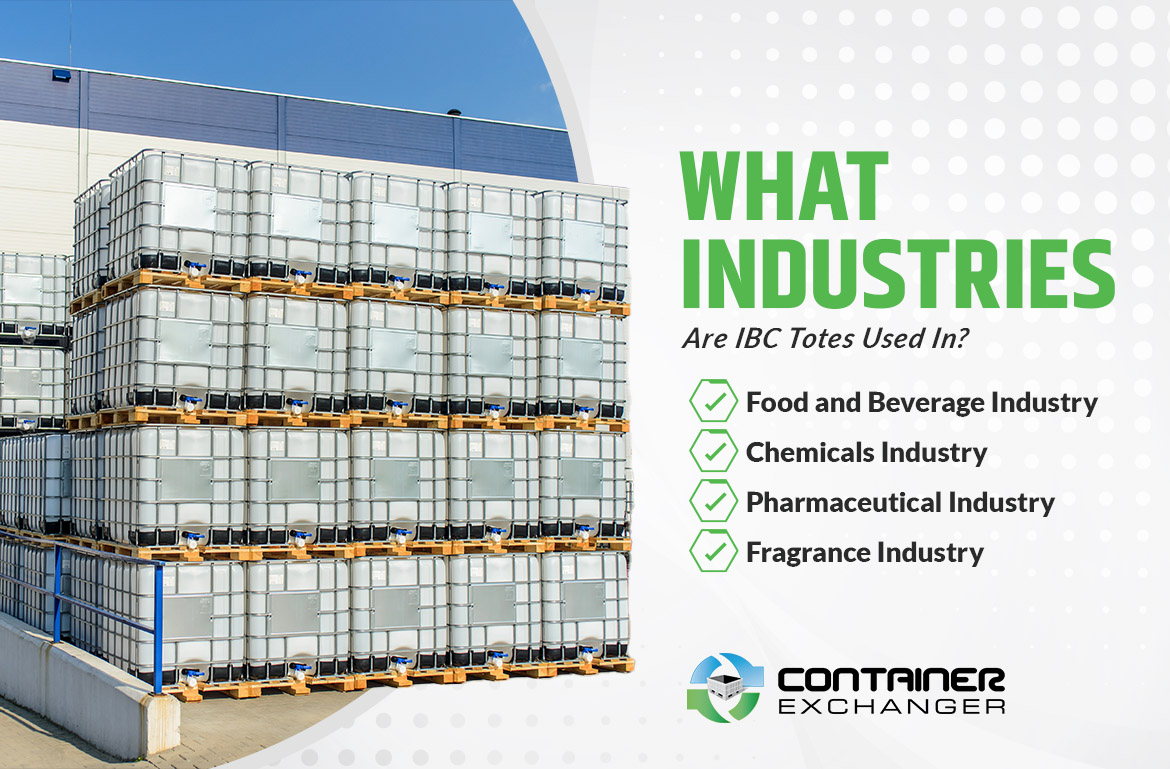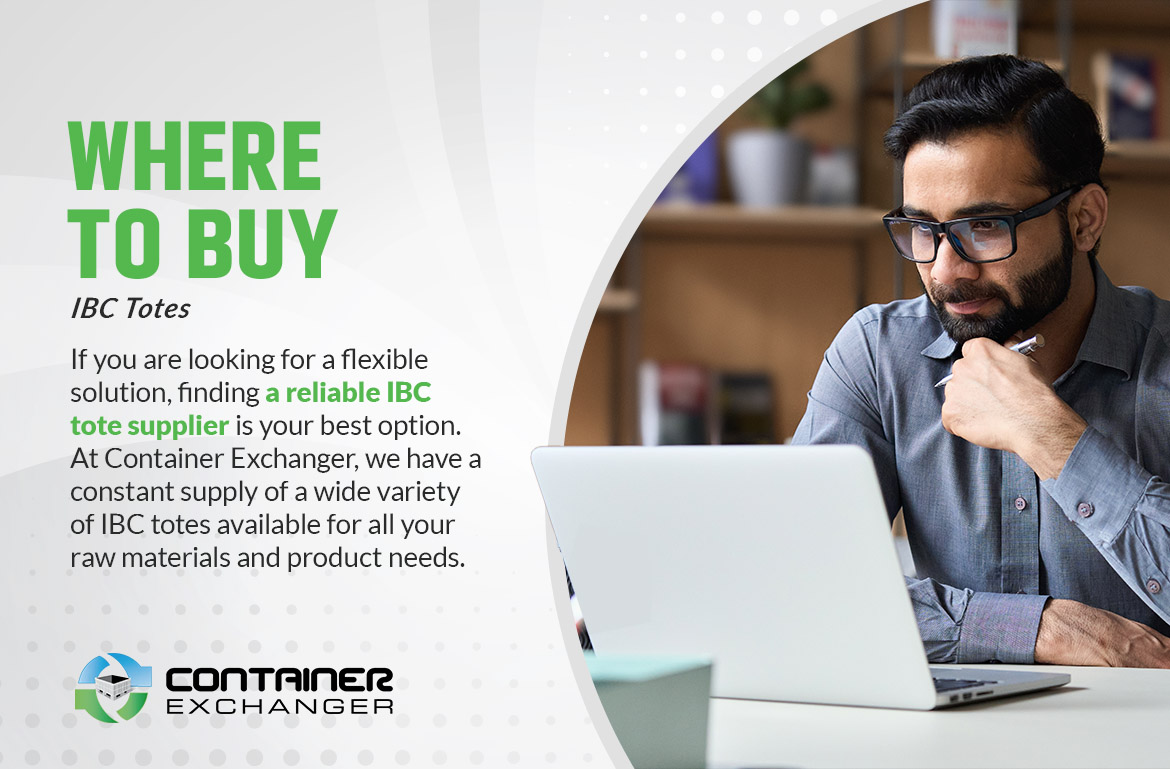In an interconnected world, the proper operation of the product supply chain is essential for maintaining the seamless flow of global commerce. The more efficiently your company runs, the easier it is to hold a strong place with your customers and in the market.
Innovations in the ability to transport goods quickly, efficiently and safely make buying quality pallet containers, carts, and IBC totes essential in the efficient transportation of goods.
What Is an IBC Tote?
If you’ve heard the term but aren’t sure what it means, an IBC tote, or intermediate bulk container, is basically a big, reusable bin for liquids and dry goods.
Most are made from high-density polyethylene (HDPE) and hold around 1,000 liters, or 275 gallons. That’s enough to move a serious volume without switching to full tanker trucks.
You’ll spot them in food and beverage, where they carry milk, juice, or syrups. In chemical plants, the same type of tote is used for hazardous materials. Construction crews even rely on them for concrete because the containers can be stacked when empty, saving space on crowded sites.
Empty totes weigh somewhere between 40 and 60 pounds, but when filled they can push 2,000. They’re built to be reused over and over, and once they’re past their service life, most can be recycled.
A Brief History
The idea of the IBC tote has been around for more than a century. Early versions showed up in the 1900s, built from wood and mainly used to haul coal. By the 1930s, steel containers had replaced them, becoming the go-to for shipping both dry goods and liquids. Plastics changed the game in the 1960s. Polyethylene totes were lighter, tougher, and easier to handle, which made them an instant hit.
From there the design kept evolving, and today totes are built in plastic, steel, and even aluminum, moving everything from food supplies to industrial chemicals. The modern tote as we know it came in 1992, thanks to Olivier J. L. D’Hollander at Dow Corning S.A. The company was already producing sealants, solvents, and adhesives, so a flexible container system was a natural fit and the IBC tote stuck.
Types of IBC Totes
Plastic IBC Totes
Made mostly from HDPE, plastic totes are light, tough, and resistant to many chemicals. They’re common in food and beverage for products like milk, juice, or syrups, and because they stack neatly and cost less than other options, they’ve become a go-to for everyday storage and shipping.
Stainless Steel IBC Totes
Steel versions are built for durability. They hold up under high heat, resist corrosion, and handle aggressive chemicals without breaking down.
That’s why you’ll find them in pharmaceutical facilities or anywhere safety standards demand a container that won’t fail under pressure.
Composite IBC Totes
These pair a plastic container with a metal cage. The mix adds strength without the price tag of full steel, making them a practical choice for oils, chemicals, or liquids that need both security and affordability.
Collapsible IBC Totes
When space matters, collapsible totes stand out. They fold flat once emptied, cutting storage and return costs. Even with that flexibility, they’re sturdy enough for repeated use, which is why companies that move bulk liquids regularly often favor them.
How to Choose the Right IBC Tote for Your Needs
You’ll find out that choosing the right flexible IBC tote for your needs isn’t one-size-fits-all.
Your choice depends on what you’re storing, how you’ll transport it, and whether it needs food-grade certification. Matching the right size, material, and grade to your product keeps operations safe, efficient, and compliant.
Capacity and Size
An IBC tote can hold quite a bit and come in a few standard sizes:
- 275 gallons — about 40 by 48 inches, with a weight capacity near 2,200 pounds.
- 330 gallons — around 45 by 48 inches, holding up to 2,600 pounds.
- 450 gallons — also about 45 by 48 inches, but built to carry close to 4,000 pounds.
Totes are designed to stack neatly. They don’t take up more warehouse space than necessary.
Materials
IBC totes are typically made from one of three materials: polyethylene (PE), high-density polyethylene (HDPE), or steel. Each material has advantages and disadvantages that should be considered when choosing an IBC container.
PE IBCs are the most lightweight option and can be easily maneuvered when empty. This type resists many chemicals and avoids rust or corrosion, though it can weaken under UV exposure and doesn’t match the strength of HDPE or steel.
HDPE IBCs are more durable than PE containers, with higher temperature tolerance and built-in UV resistance. However, HDPE IBCs are more expensive than PE IBCs.
Steel IBCs are the heaviest option but are also the most durable. Built for strength, steel IBCs endure high heat and resist chemical damage. Steel containers will not rust or corrode, but they can be susceptible to damage from impact.
Food-Grade vs. Non-Food-Grade IBC Totes
Not every tote is safe for food. The split is usually between food-grade and industrial/non-food-grade (IND), and knowing the difference is important. Food-grade totes use FDA-approved materials that can safely touch food and drinks. They’re required to be washed and sanitized before use, which adds work but keeps the contents safe. These are what you’d see in dairies, beverage plants, or anywhere the product ends up on a grocery store shelf. IND totes don’t have the same approvals. They’re fine for chemicals, oils, coatings, or other non-edible products, but they should never be used for anything people consume. Getting the grade wrong can mean ruined product, fines, or worse — so it’s not a decision to take lightly. If the contents are edible, go FG. If not, IND totes are usually the better fit.
What Industries Are IBC Totes Used In?
A major benefit of IBC totes is that they can be used repeatedly, reducing overall waste generation and saving money in the long run.
Understanding the needs of each specific industry allows decision-makers to choose the proper type of IBC tote for products. Looking at the transport specifications of some critical industries can lead logistics professionals to the right choice.
Food and Beverage Industry
Due to the nature of perishable food products, the food and beverage industry has specific transport requirements that must be met to ensure the safety and quality of the items being transported. For example, food and beverage products can spoil, causing health issues if consumed and thus requiring temperature-controlled transport to maintain their freshness. Many items in this category are fragile, so they have to be handled gently to prevent damage.
Meeting these standards usually calls for transport providers equipped with proper gear and trained staff. Many operate refrigerated trucks and warehouses that keep food totes at the right temperature while also protecting fragile products during handling.
IBC totes fulfill these specialized transportation requirements and businesses in the food and beverage industry can be confident that their products will arrive safe, fresh, and undamaged.
Chemicals Industry
Chemicals bring a different level of risk, which is why the rules around moving them are so tight. Labels have to be clear, containers sealed right, and the wrong packaging can create real problems fast. Most shipments go by truck, but rail and sea are also common depending on where the load is headed.
Safe transport depends on more than just the container. Vehicles have to be in good condition, drivers need proper training, and shipments should be planned ahead to avoid disruptions.
With proper cleaning and inspection, totes can safely carry hazardous liquids from one site to another, which is why they’ve become a go-to option in the chemical trade.
Pharmaceutical Industry
The pharmaceutical industry is subject to many transport specifications due to the nature of the products being transported. This might include cold storage during shipping, reinforced containers, and strict handling measures.
Pharmaceutical companies face rules from city agencies all the way up to international regulators. Because the rules are complex, they often rely on logistics partners with the right knowledge and resources. Working side by side helps keep shipments compliant and delivered in good condition. The range of IBC tote types covers the needs of pharmaceutical companies looking to transport their drugs worldwide. Whether medication needs to maintain a specific temperature or strict batch tracking needs to be kept, IBC totes are ideal for the job.
Fragrance Industry
Perfumes and other fragrance goods are traded worldwide, and moving them safely is a core part of the business. Because these liquids are often flammable and sensitive to contamination, strict rules guide how they are shipped.
First, all fragrance products must be packed in compliant packaging. The materials used need to stop leaks and shield the contents from breakage. Second, all fragrance products must be shipped using registered mail or a similar service. That way each package can be tracked and accounted for during transit. Finally, all fragrance products must be shipped with an MSDS. An MSDS explains what risks the product may carry and outlines how to work with it safely and how to dispose of it.
Sticking to the required transport standards allows the fragrance industry to move products without safety risks. IBC totes meet all of the challenges necessary for properly transporting fragrances.
Attachments and Fittings That Can Enhance IBC Tote Functionality
IBC totes are versatile storage options for many businesses, but there are a few attachments and fittings that can enhance their functionality. For example, adding casters to an IBC tote can make it easier to move around, and adding a spigot can make it simpler to dispense liquids.
Attaching a lid to an IBC tote can help keep contents clean and dry. Since plenty of fittings and attachments are available, the best approach is to work with someone who knows the equipment and can match it to your needs. With the right attachments and fittings, businesses can customize IBC totes to meet the specific needs of their products.
IBC Tote Identification and Tracking
IBC tote identification and tracking is a system that uses RFID tags to identify and track intermediate bulk containers. IBC tote identification and tracking help ensure that IBCs are properly labeled and tracked throughout their journeys.
Identification and tracking can also be used to monitor the contents of IBCs, ensuring they are not contaminated or spoiled.
Tracking systems are no longer just for warehouses — customers can now see where their orders are, which helps businesses stay open about delivery. Blockchain solutions are innovating the way companies transport goods, and IBC totes are ideal for leveraging these advancements.
A further advantage of IBC tote identification and tracking is that it allows containers to be tracked on-site, ensuring they can be located without delay.
IBC Tote Shipping and Storage
One advantage of using IBC totes is that they can be easily stacked and stored when not in use. IBC totes are built for reuse, which makes them a greener choice compared to single-use containers. For businesses moving or storing large volumes of liquids, they’ve become a standard tool.
Frequently Asked Questions
Are IBC Totes Safe for Stacking?
Yes, many IBC totes are built for stacking, but the surface they are stacked on must be level and you need to follow the weight limits listed. Using stackable ICB totes can help save warehouse space. However, ignoring the manufacturer’s guidelines can damage the containers and be dangerous.
How Long Do IBC Totes Typically Last?
An IBC tote usually lasts around three to five years, sometimes more if it’s cared for. How long it holds up comes down to the material, how often it’s used, and whether it’s stored indoors or left outside.
How Do I Transport IBC Totes Safely?
Use forklifts or pallet jacks to move IBC totes securely, and always strap them during transport to prevent shifting. It’s key to check weight ratings, use flat surfaces, and follow DOT or industry regulations to avoid spills, leaks, or accidents.
Are Industrial Grade IBC Totes Safe for Hazardous Material Transport?
Yes, certain IBC totes are certified for hazardous materials, but not all are suitable. Always choose UN/DOT-approved containers, check labeling, and follow strict regulations to ensure safe handling. Using the wrong tote can risk contamination, fines, or dangerous accidents.
Where Can You Buy IBC Totes?
If you are looking for a flexible solution, finding a reliable IBC tote supplier is your best option. At Container Exchanger, we have a constant supply of a wide variety of IBC totes available for all your raw materials and product needs.
On our website, you can learn how to buy IBC totes safely and affordably. Anyone looking to sell containers will find tips on reaching buyers fast and keeping the process simple.
Find the Right IBC Tote Today!
The Final Notes on Flexible IBC Tanks
IBC totes deliver convenience, durability, and flexibility across industries from food to chemicals. Choosing the right tote means considering size, material, and certification for your exact needs. Ready to find the perfect fit? Explore our available IBC totes today and get a reliable, cost-effective container built for your business.




